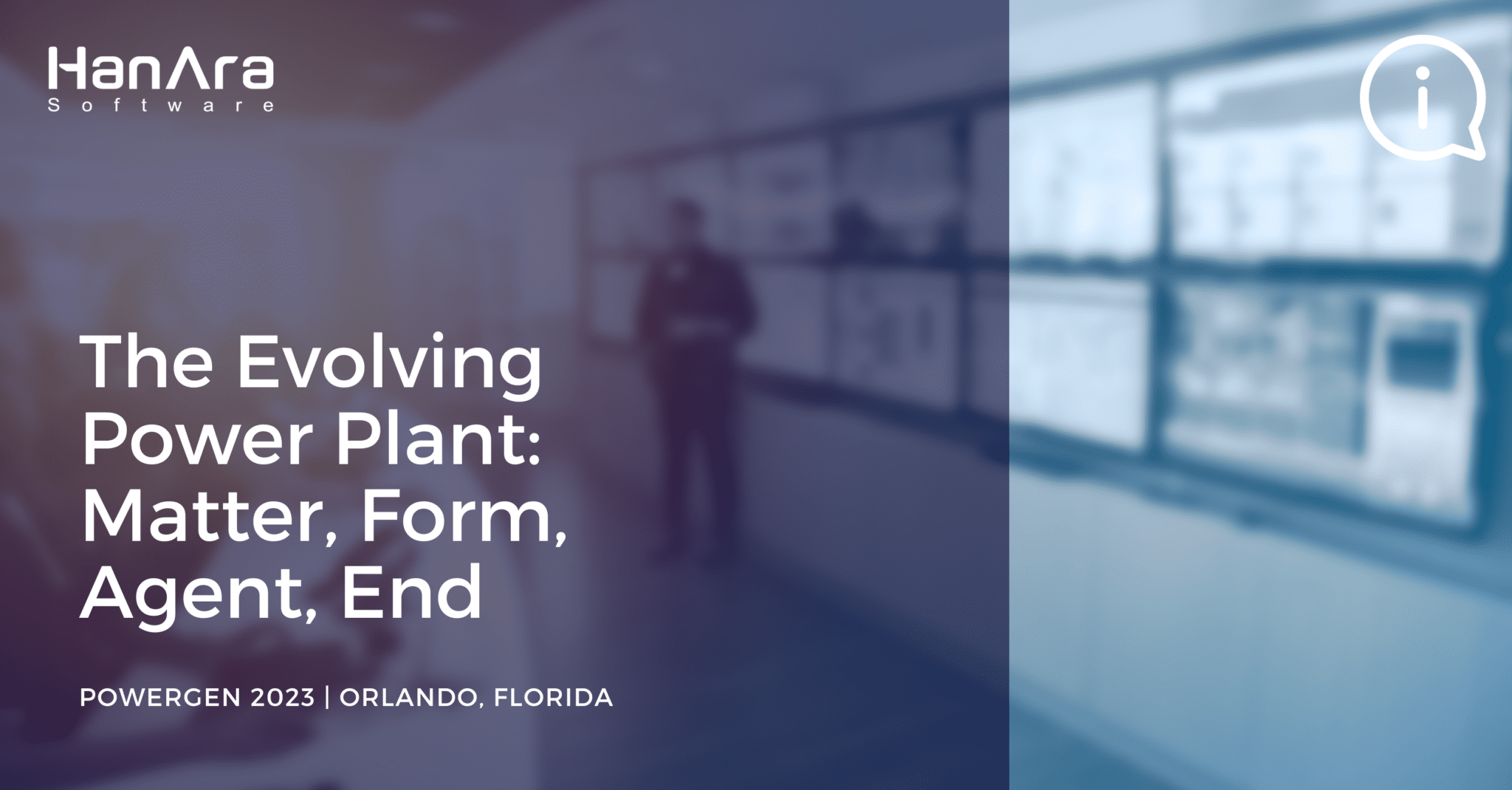Members of our team spent last week in Florida for POWERGEN 2023. This year’s conference included a track focused on the evolving power plant. But what does an evolving power plant mean? As the industry faces this question, discussions swirl around the concept of the smart plant and digital transformation. These discussions tend to focus on the technology’s what and how, but the why is just as important.
To answer why the power plant is evolving, consider using a framework to conceptualize and analyze the change. As a starting point, we’ll use Aristotle’s framework over 2000 years old called the four causes.
The Evolving Power Plant
Control room digitalization is everywhere, and rapid advances in sensors, control systems, data visualization tools, and artificial intelligence are driving efficiency from existing operations and enabling greater flexibility and insight into machine health. In this track, experts showcase the latest technologies that detail power plant and equipment performance to enhance decision-making and ensure that existing generating assets remain viable. Educational sessions will include the following topics:
- Digital twins
- Industrial Internet of Things
- Data Analytics
- Artificial Intelligence/augmented reality
- Sensors
- Software solutions
- Cybersecurity
- Controls and communication
The Four Causes
According to Aristotle, there are four causes to explain a change. Though translated into English as causes, it is better to consider them explanations, not causalities. These explanations interact, and Aristotle categorized them into matter, form, agent, and end.
- Matter: the material of the change
- Form: the arrangement, shape, or appearance of the change
- Agent: a thing or person interacting with the change
- End: the final state or purpose
By reflecting on the four causes of the evolving plant, we can identify limitations we’ve created in our minds based on our assumptions and uncover potential opportunities for the future and growth.
The Matter of an Evolving Power Plant
A power station is very young compared to Aristotle’s four causes concept. In the late 1800s, with the advent of an industrial generator, a power station as we think of it today became possible. When you distill a power plant down to its base matter level, inputs are turned into outputs with equipment in the middle. This description could also describe a manufacturing plant. But what makes a power plant a power plant is that the inputs are always primary energy and the desired output is electricity.
Now with digital transformation and automation, an additional output of a power plant is data. But, of course, this data is not a power plant’s core business. And at the same time, more and more plants are beginning to value their data as a corporate asset. By identifying ways to leverage their data for improved insights and actionable intelligence, plants can better optimize their usage of primary energy to generate electricity.
The Form of an Evolving Power Plant
The ability to produce electricity from primary energy is what it means to be a power plant. Primary energy sources, including nuclear, fossil, and renewable sources, have existed for a long time. For example, the first nuclear power plant producing electricity for the grid began operation in the 1950s. And other sources have even longer histories. For example, the first wind turbine producing electricity started operations in the 1880s. The form of a power plant is dynamic and changes with each passing year due to technological and knowledge advancements.
There have been advancements in how we use primary energy, harness its potential energy, and manage power. From nuclear fusion to distributed energy resources (DERs) to energy storage, technology advancements have advanced the concept of the power plant. With this changing form, the industry must consider how to manage, maintain, and plan for the future.
The Agent of an Evolving Power Plant
Like any industry, the power generation industry consists of a changing cast of people. One challenge the power generation industry faces is an aging workforce. The aging workforce has been a topic for years, and many discussions have revolved around how to fill the knowledge gap. As members with expert knowledge retire, the industry must attract and retain new members and transfer the years of built-up institutional knowledge. Luckily, according to the Center for Energy Workforce Development (CEWD), “retirement attrition has reached its lowest level since 2014.”
Check out the CEWD’s Gaps in the Energy Workforce 2021 Pipeline Survey Results for more information.
Unfortunately, non-retirement attrition has increased. That means that to stay competitive and viable, the industry must improve how it retains its employees. Ensuring competitive benefits is, of course, a part of the answer. But using technology and advanced tools provides the necessary resources and support to keep younger generations engaged and in the industry.
The End of an Evolving Power Plant
At its core, the purpose of the power plant has not changed. A power plant provides electricity to its consumers to enable modern life. Modern life has advanced and now requires more electricity. According to the EIA, the “total U.S. electricity consumption in 2021 was about 3.93 trillion kWh and 13 times greater than electricity use in 1950.” Experts expect this amount to increase with advancements in electrification in the coming years, including electric vehicles and heat pumps.
Beyond the increase in electricity usage, more focus is also on reliable and sustainable electricity. As governments and organizations set decarbonization goals, power generation projects have changed how they operate now and how they will perform in the future. To meet these goals, the industry must make significant changes in the next 30 years to achieve these sustainability and reliability goals.
Learn More
Missed us at POWERGEN 2023 and are interested in learning how we help evolving power plants? Reach out to us today. We help provide users with the tools to manage and maintain their plants and plan for the future.

